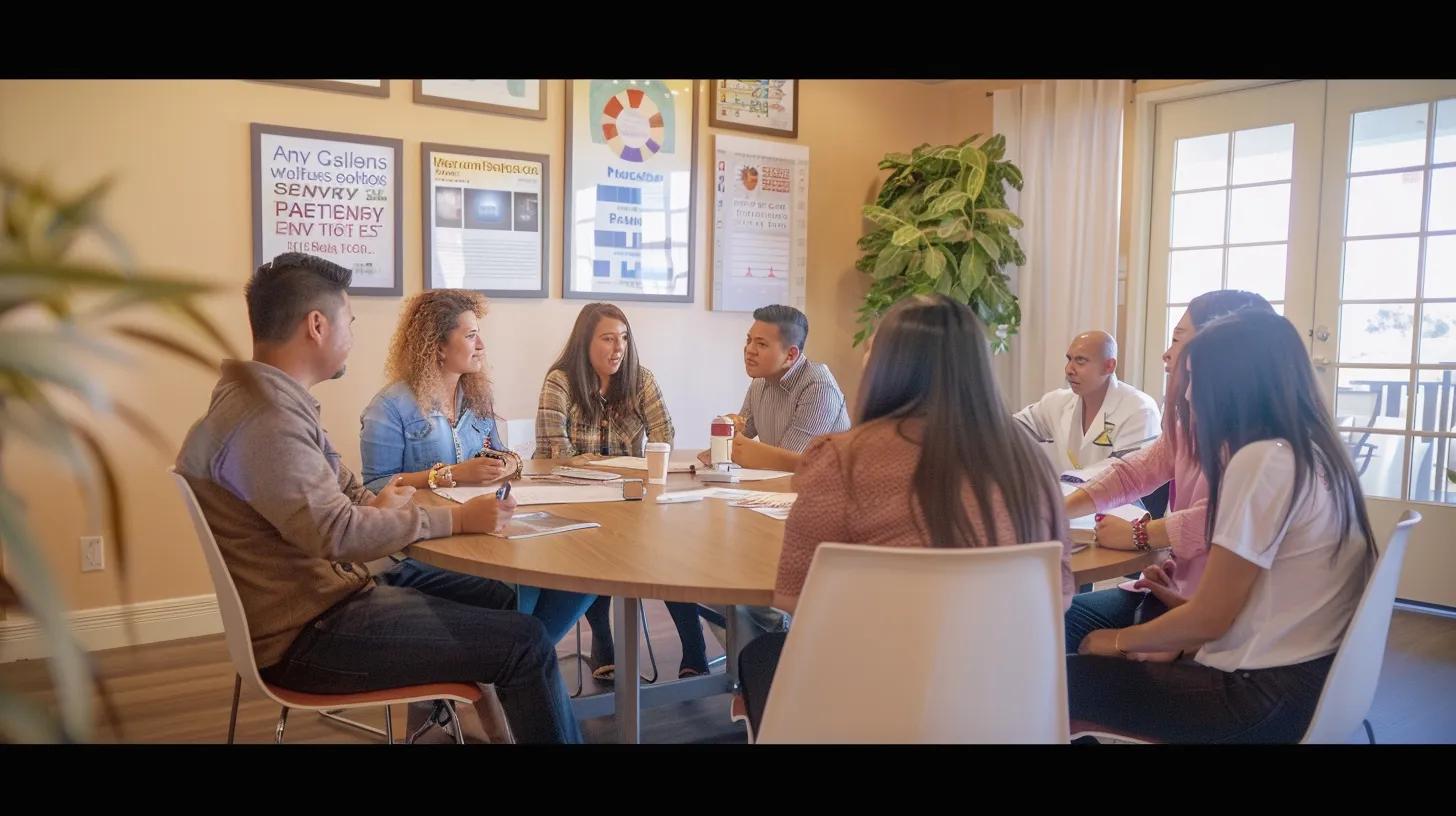by Clear Path Intervention
Share
by Clear Path Intervention
Share

Essential Support for Families Following Addiction Intervention
Addiction intervention is a critical and challenging process that affects not only the individual struggling with substance abuse or behavioral disorders but also the entire family unit. In many cases, professional intervention services are recommended to help bridge the gap between the initial crisis and long-term recovery. After an intervention, families are often left to navigate a complex post-intervention landscape characterized by emotional pain, uncertainty, and hope for recovery. With the increasing prevalence of substance abuse issues and interventions mental health issues across America and globally, many families find themselves overwhelmed by the need to balance support for their loved one with their own mental and physical well-being. This article explores essential support strategies for families following an addiction intervention, focusing on how to rebuild communication and trust, set healthy boundaries, access community support, and prioritize self-care during the recovery journey. For more information and guidance, please visit contact-us-an-interventionist for assistance.
The purpose of this article is to provide family members with clear, actionable guidance and evidence-based strategies, including professional intervention services, to help manage the aftermath of intervention. Using both contemporary research and real-world examples, the discussion examines how addiction influences family dynamics and highlights how interventions mental health issues can be addressed alongside traditional treatment methods. For those seeking more direct support, readers are encouraged to contact-us-an-interventionist for further assistance. Additionally, keywords such as interventions-for-families, substance abuse, community, fentanyl overdose intervention, treatment, recovery, and peer support are interwoven throughout the article to reflect the pressing issues families face today. In this process, resources like samhsa offer additional insights into sustainable recovery. The strategies outlined herein not only address the immediate emotional fallout but also provide a framework for sustainable recovery and enduring family resilience. With these insights, families can begin to shift from crisis management to proactive healing and growth.
Transitioning into the main discussion, each section below details a critical aspect of the post-intervention process, featuring both overarching concepts and specific, step-by-step guidance for families affected by addiction. In this context, professional intervention services are vital in addressing interventions-for-drug-addiction, as well as interventions mental health issues that often accompany recovery. For personalized guidance, please visit contact-us-an-interventionist or consult resources available from samhsa and nida.
Understanding the Post-Intervention Landscape in Addiction Recovery

Understanding the post-intervention landscape is essential for families coping with the aftermath of an addiction crisis. This phase involves recognizing the emotional, behavioral, and relational changes that occur after the intervention and preparing for the road to recovery. Families often experience a myriad of feelings such as relief, guilt, anger, and hope, which can fluctuate daily. It is crucial for families to acknowledge these emotions as part of the healing process; doing so allows them to address issues proactively rather than suppressing them, which can lead to further distress.
Defining family roles in the addiction recovery journey plays a significant role in determining how responsibilities are shared and how support is provided. In many cases, family members must redefine what it means to be supportive while also taking care of their own mental health. For instance, a parent might feel compelled to protect the child at all costs, while another member of the family may feel isolated by the intensity of the situation. Recognizing personal roles enables the family to manage expectations and allocate responsibilities more effectively.
Navigating emotional shifts within the family unit is another critical component of this phase. Post-intervention, it is common for long-held resentments and feelings of betrayal to resurface. Families must engage in open dialogue about these emotional shocks, often facilitated by professional counseling or family therapy sessions. As each family member processes the intervention in their own way, establishing realistic expectations for the addiction recovery process becomes imperative. The journey toward recovery is rarely linear; families should prepare for setbacks as well as milestones, balancing the hope for renewed relationships with the reality that recovery is an ongoing effort. This approach helps prevent unrealistic demands and fosters a supportive environment for everyone involved.
Recognizing the impact of addiction on family dynamics allows each member to appreciate the complex interplay between individual recovery and shared healing. Supporting each other during times of emotional upheaval lays the groundwork for rebuilding trust and encouraging sustainable change.
Rebuilding Communication and Trust in Addiction Recovery

Rebuilding communication and trust following an addiction intervention is a deeply personal and often challenging task for families. Open, honest dialogue is the cornerstone of repairing relationships that have been strained by addiction. The first step for many families is to re-establish lines of communication—which may have deteriorated due to secrets, shame, or unresolved conflicts. Fostering open and honest dialogue post-intervention means setting aside judgments and focusing on empathetic listening. This dialogue should be characterized by transparency, where every family member is encouraged to share their feelings, expectations, and the impact of the addiction on their lives.
Learning active listening skills for better family understanding is imperative. Active listening involves giving full attention to the speaker, acknowledging their perspective, and offering thoughtful responses. For example, during family discussions, each member is invited to express their emotions without interruptions. This respectful exchange builds a foundation where trust can gradually be restored. Techniques such as reflective listening and summarizing what has been said help ensure that everyone feels understood, reducing the likelihood of miscommunication.
Addressing lingering resentment and hurt in addiction recovery is a vital aspect of rebuilding trust. Often, family members may harbor deep-seated feelings of betrayal or abandonment. Professional therapy can help to address these issues by providing a safe space for each person to express their frustrations and to begin healing old wounds through guided discussion. Over time, the dedication to addressing pain can transform the relationship into one that is honest and mutually supportive—a critical factor in fostering long-term recovery.
Re-establishing trust through consistent actions and support is essential to this process. Rebuilding trust does not happen overnight; it is accumulated through repeated, positive interactions over time. For instance, when the recovered individual shows commitment to attending aftercare programs or therapy sessions, family members can reinforce that behavior by acknowledging these efforts. This positive feedback loop helps mend broken bonds and sets the stage for a more resilient family structure. Improved communication not only bolsters the recovering individual’s journey but also empowers the entire family, enabling them to work together on overcoming the challenges that lie ahead.
Setting Healthy Boundaries for Sustainable Addiction Recovery

Setting healthy boundaries is critical for families during addiction recovery, ensuring that every member’s needs are respected while fostering an environment that supports sustainable growth. Identifying and eliminating enabling behaviors forms the first pillar of this process. Enabling can manifest in many subtle ways, such as consistently covering for the person’s mistakes or taking on excessive responsibilities. Families must learn to differentiate between supportive behavior and enabling behavior that inadvertently supports the addiction. For example, instead of constantly bailing out a loved one financially or emotionally, establishing a clear limit on what is acceptable can prevent further relapse and promote responsibility.
Communicating boundaries clearly and respectfully is the next important step. Family members should come together to discuss and agree on a set of mutual expectations. This includes specific guidelines for communication, behavior, and personal autonomy. When boundaries are stated in clear, respectful language, they become actionable rules that everyone in the family can adhere to. Setting boundaries might involve deciding on times when it is acceptable to discuss recovery or agreeing not to discuss triggering topics without professional support. This helps prevent conflict and creates a stable atmosphere where each member’s emotional and physical well-being is prioritized.
Maintaining individual well-being while supporting a loved one in addiction recovery is another critical factor. Family members must not lose sight of their own needs in the process of caregiving. Engaging in hobbies, seeking personal counseling, or even joining support groups tailored for families can help prevent burnout. Over time, maintaining personal well-being fuels the ability to support others more effectively, ensuring that interventions are sustainable rather than depleting.
Adapting boundaries as addiction recovery progresses is essential because the needs of the individual in recovery, as well as the family, will evolve. At the outset, boundaries might need to be strict to manage crises and prevent relapse, but as trust rebuilds and stability returns, these guidelines can be gradually relaxed. This adaptive approach ensures that boundaries remain relevant and effective throughout every stage of the recovery journey. By reinforcing healthy boundaries, families can create an environment that supports growth, respect, and ultimately, long-lasting recovery.
Accessing Family Support Systems and Addiction Recovery Resources

Accessing robust family support systems and diverse addiction recovery resources is paramount in the aftermath of an intervention. With a wealth of educational materials, therapy options, and community support groups available, families have numerous channels to facilitate healing. Locating family therapy and counseling services should be one of the first steps for any family affected by addiction. Professional guidance provides not only an objective perspective on complex family dynamics but also evidence-based strategies to navigate the emotional turbulence that often follows an intervention. Many therapy programs are tailored specifically to families, recognizing that recovery is a collective journey.
Joining support groups for families affected by addiction is another key resource. Peer support, offered through local community groups or online platforms, allows families to connect with others who share similar experiences. Such platforms offer emotional validation and practical advice through direct shared experiences, which are critical in breaking down the isolation that many family members feel during recovery. For example, organizations like Al-Anon or Nar-Anon serve as invaluable support networks, providing both hope and tangible coping strategies. These groups not only offer shared experiences but also serve as a conduit to further resources, such as workshops and collaborative care settings.
Utilizing educational materials on addiction and recovery is equally important. When families possess accurate and up-to-date information on substance abuse, relapse triggers, and treatment methodologies, they can better understand the behaviors associated with addiction. This knowledge empowers families to support their loved ones more effectively, making informed decisions about long-term care. A well-rounded resource collection might include reputable books, online courses, and articles from peer-reviewed journals that explain the neurobiological basis of addiction, providing context for treatment strategies and recovery expectations.
Finding peer support networks for shared experiences also provides a vital outlet for emotional expression and stress relief. Such networks can be found through community centers, local hospitals, or even specialized social media groups. Peer support networks are especially beneficial for those who may feel stigmatized by their loved one’s addiction, offering reassurance that they are not alone. The information and empathy shared in these groups help create a more informed and compassionate approach to recovery. In harnessing a combination of professional and peer-led resources, families can build a comprehensive safety net that reinforces the recovery process while sustaining the emotional health of every member involved.
Prioritizing Self-Care for Family Members in Addiction Recovery

Prioritizing self-care is imperative for family members navigating the complexities of addiction recovery. Recognizing the signs of caregiver burnout is the first step in ensuring that those supporting their loved ones do not compromise their own well-being. Burnout often manifests as chronic stress, emotional exhaustion, and even physical health issues. Monitoring these warning signs allows family members to seek timely help, whether through professional counseling or self-care practices. It is essential for caregivers to acknowledge that their well-being is just as important as that of their loved one in recovery.
Implementing stress-management techniques can dramatically improve daily functioning and resilience. Techniques such as mindfulness, deep breathing exercises, and regular physical activity not only reduce stress but also enhance mental clarity and emotional stability. Many families find that simple practices like taking regular walks, practicing yoga, or even meditating offer significant improvements in overall mood. Research published in the Journal of Behavioral Medicine has shown that mindfulness-based stress reduction can decrease symptoms of anxiety and depression in caregivers by up to 25% (Kabat-Zinn, 2013; source). This evidence underscores the importance of integrating structured stress relief into daily routines.
Pursuing individual hobbies and interests also plays a crucial role in maintaining self-care. When caregivers engage in activities they enjoy, whether it’s painting, reading, or gardening, they create positive outlets for stress that contribute to renewed energy and creativity. Hobbies provide an opportunity to divert attention away from the constant emotional demands of caregiving, reinforcing a healthy work-life balance. Furthermore, participating in these activities can lead to improved self-esteem and a greater sense of autonomy, which are both essential for long-term emotional health.
Seeking personal therapy or counseling when needed is another key strategy in self-care. Professional counselors can help caregivers develop personalized coping strategies, address unresolved pain, and build resilience. Therapy not only provides a confidential space to express feelings but also equips individuals with practical tools to manage stress and set boundaries. It is vital for family members to remember that prioritizing self-care is not an act of selfishness—it is a necessary foundation for sustaining the energy and compassion required to support a loved one through recovery.
In addition to these approaches, establishing a routine that includes regular self-care activities can lead to significant improvements in mental and physical health. By ensuring that self-care is a consistent part of their lives, family members are better equipped to handle both the challenges of recovery and the emotional complexities that come with supporting someone through addiction.
Supporting the Loved One’s Continued Addiction Recovery Efforts

Supporting a loved one’s continuous addiction recovery efforts requires a delicate balance between encouragement and cautious oversight. Encouraging participation in aftercare programs is essential, as these initiatives provide ongoing rehabilitation and community support. Aftercare programs, including outpatient counseling, sober living environments, and support groups, help sustain the progress achieved during initial treatment. Consistent participation reinforces the recovery process, builds a sense of accountability, and minimizes the risk of relapse. Studies have shown that individuals involved in aftercare programs have a 30% higher rate of sustained recovery compared to those who do not engage in structured follow-up support (McKay, 2017; source).
Offering practical assistance without enabling is another key component. This assistance can include helping to manage appointments, providing transportation to treatment sessions, or assisting in household responsibilities, ensuring that the individual in recovery is not overwhelmed. However, it is critical to avoid actions that constitute enabling, such as repeatedly bailing out the person from harmful behaviors or neglecting personal boundaries. By maintaining a structure where help is offered in a controlled, clearly defined manner, families encourage independence while still providing necessary support.
Celebrating milestones in the addiction recovery journey is important for reinforcing progress and building self-esteem. Acknowledging achievements—small or large—helps to instill a sense of accomplishment and motivates the recovering individual to continue striving for sobriety. Celebrations can vary from simple family dinners to commemorative events, and they serve as tangible reminders of progress made. Each celebration reinforces positive behavior and allows both the individual and family members to reflect on the progress made through rigorous and often painful journeys.
Preparing for and managing potential relapses also requires a strategic approach. Relapse, while disheartening, is often a part of the long recovery process. Having a plan in place, which may include emergency counseling sessions or a predefined support network, can mitigate the emotional and practical consequences of a setback. Transparent communication about the possibility of relapse helps reduce the stigma and emotional shock when it occurs, enabling the family to act decisively and compassionately. Ensuring that everyone involved understands that relapse is not a failure but rather a potential obstacle that can be overcome is crucial for maintaining a supportive environment.
Through these strategies, family members become active participants in the recovery process without compromising their boundaries or enabling destructive behaviors. This balanced approach helps to create a sustainable environment where the individual in recovery feels supported and empowered to continue on their path to long-term sobriety.
Long-Term Healing and Growth for the Family in Addiction Recovery

Long-term healing and growth for the family in addiction recovery are products of persistent effort, education, and the willingness to evolve with changing circumstances. Integrating lessons learned from the addiction recovery process helps families to develop new perspectives on their relationships and personal well-being. Over time, families learn that recovery is not solely about abstaining from substance use but also about cultivating healthy boundaries, self-awareness, and resilience. This integration is achieved through ongoing education, participation in family therapy sessions, and reflection on past experiences. Families that actively apply these lessons are more likely to experience improved communication, deeper empathy, and long-lasting cohesion.
Strengthening family bonds and relationships is central to the healing process. Many families come out of an addiction crisis with wounds that take time to heal. By investing in rebuilding relationships through regular family sessions, shared activities, and celebrating everyday moments, the family unit can find a renewed sense of unity. Activities such as game nights, group outings, or even collaborative projects encourage bonding and foster an environment where trust is re-established gradually. As relationships strengthen, the family becomes less defined by past traumas and more by mutual growth and resilience.
Developing new, healthy family traditions and routines marks another essential part of long-term healing. Traditions create stability and a sense of belonging, which are pivotal for a family recovering from the chaos of addiction. These traditions might include annual vacations, weekly family meetings, or holiday rituals that emphasize gratitude and togetherness. Such activities do more than pass the time; they actively contribute to the emotional restoration of each family member. They create a legacy of care and continuity that transcends the immediate crisis.
Fostering a home environment supportive of ongoing addiction recovery is a continual process. The home should become a sanctuary where open communication, respect, and proactive problem-solving are the norm. This might involve implementing changes in the physical space—such as creating quiet areas for reflection or family discussion spaces—as well as emotional adjustments like regularly reaffirming commitments to recovery goals. This supportive environment not only aids the loved one in recovery but also offers every family member an opportunity to thrive personally.
One effective way to monitor long-term progress is by maintaining a family journal or progress chart. This tool can help document milestones, setbacks, and reflections over time, offering a tangible record of growth. Additionally, involving the entire family in periodic reviews of recovery strategies can reveal what areas are working well and where further adjustments might be needed. This transparent, inclusive approach empowers every member to take part in long-term healing and ensures that the journey toward well-being is a shared responsibility.
Frequently Asked Questions
Q: What are some effective strategies for rebuilding trust after an addiction intervention? A: Effective strategies include engaging in consistent, open communication, using active listening techniques, and involving professional family therapy. These approaches help address past grievances and build a foundation of understanding, critical for long-term recovery.
Q: How can families differentiate between enabling behavior and supportive behavior? A: Enabling behavior often involves making excuses or protecting the individual from the consequences of their actions, whereas supportive behavior sets healthy boundaries and encourages accountability. Families can work with a professional to establish clear guidelines that foster independence.
Q: What role does self-care play in the recovery process for family members? A: Self-care is essential as it helps prevent caregiver burnout and emotional exhaustion. Techniques such as mindfulness, exercise, engaging in hobbies, and seeking personal therapy enable family members to maintain their well-being, ensuring they can effectively support their loved one.
Q: How important is aftercare in the addiction recovery process? A: Aftercare is vital for sustaining recovery. It provides continuous support, reinforces healthy behaviors, and significantly reduces the risk of relapse. Participation in structured aftercare programs has been shown to improve long-term outcomes.
Q: Can relapse be a normal part of the recovery process? A: Yes, relapse can occur and is often part of the recovery journey. While distressing, it should be viewed as a setback rather than a failure. Developing a clear plan to manage potential relapses is crucial in maintaining momentum in recovery.
Q: How can families access quality support resources post-intervention? A: Families can access support through professional counseling services, school or community programs, reputable online resources, and peer support groups such as Al-Anon or Nar-Anon. These resources provide invaluable guidance and emotional support during challenging times.
Q: What long-term changes can families expect as they heal from addiction? A: Over time, families generally experience improved communication, stronger emotional bonds, and the development of healthy routines and traditions. These changes lead to a more supportive home environment where every member can pursue personal growth and collective healing.
Final Thoughts
Long-term recovery is a journey that demands commitment, patience, and unity from every family member. By understanding the complexities of the post-intervention landscape and rebuilding communication and trust, families can begin to heal deeply rooted wounds. Setting healthy boundaries and prioritizing self-care not only supports the loved one in recovery but also strengthens the family unit as a whole. With the right resources, support systems, and a proactive approach to healing, families can transform their lives and foster enduring resilience in the face of addiction.
HELP IS AVAILABLE
Do You Have a Loved One Struggling with Addiction or Mental Health Issues?
In 2024, Virginia experienced the nation’s second‑largest drop in overdose deaths, with over 1,500 fatalities reported and a 44% reduction in fentanyl‑related deaths, according to provisional CDC data. That decline follows a national trend, where the U.S. saw a nearly 27% decrease in overdose deaths between 2023 and 2024. Yet while fewer lives are being […]
Mental Health in Alabama: Families Need More Than Awareness Across Alabama, families are quietly struggling with addiction, mental health disorders, and the heartache of watching loved ones spiral. While awareness around mental health is rising statewide through public programs, education, and increased conversation what many families need most is direct, personal support that meets them […]
Why Family Matters More Than Ever in Addiction Recovery Addiction is often seen as a personal battle, but the truth is it impacts everyone close to the person struggling — especially their family. A recent 2025 study from the National Institute on Drug Abuse found that people involved in treatment programs with their family’s active […]
“Without structured aftercare, families and their loved ones often find themselves back in crisis mode within weeks. Recovery begins at treatment—but it’s sustained at home.” — Dr. Evan Larsson, clinical psychologist and addiction recovery specialist The Overlooked Phase of Recovery Most families think the hardest part of addiction recovery is getting their loved one into […]





